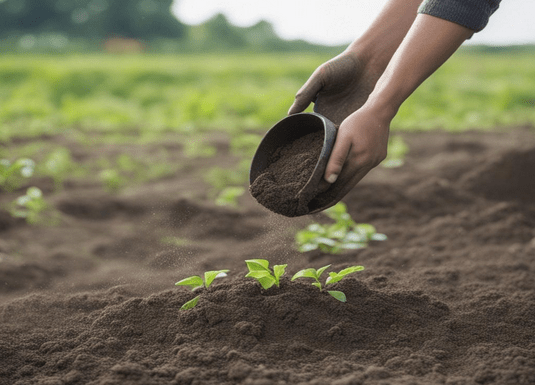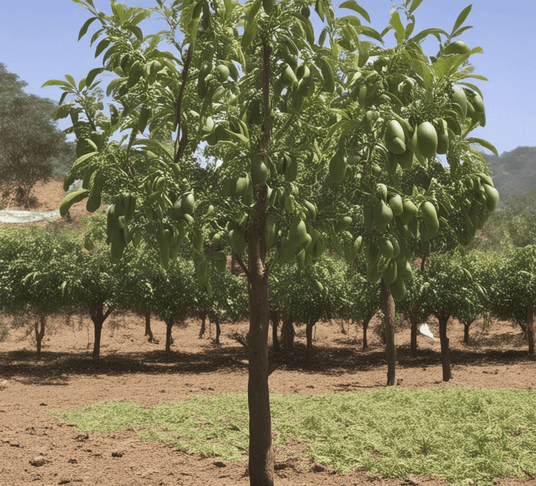Wondering how to fertilize avocado trees for the best growth? Fertilizing your avocado tree is like giving it a special treat to help it grow strong and healthy. Whether you’re a kid with a love for avocados, a family starting your own avocado tree, or just someone who enjoys gardening, this guide is made for you. We’ll show you easy and effective ways to feed your avocado tree, so it can give you those yummy avocados we all love. You don’t need to be a gardening expert; our simple steps will guide you through the process. Let’s start nourishing your avocado tree together for a bountiful harvest!
When to Fertilize Avocado Trees
Early Spring:
Kickstart the season with the first round of fertilization just before new growth begins. Avocado trees are hungry for nutrients at this stage.
Mid-Spring:
Follow up in mid-spring to support the development of fresh leaves and blossoms, which are crucial for future fruit production.
Late Spring (optional):
If your avocado tree is a prolific producer, consider a third application later in spring to ensure it has an ample nutrient supply.
Summer:
During the hot summer months, reduce or cease fertilization to prevent stressing the tree.
Choosing the Right Fertilizer
Selecting the appropriate fertilizer is a key decision for avocado tree care. Opt for a balanced, slow-release fertilizer with a formulation like 10-10-10 or 14-14-14. These numbers represent the percentages of nitrogen, phosphorus, and potassium in the fertilizer, respectively.
How to Fertilize Avocado Trees
Measure the Area:
Determine the canopy diameter by measuring from the trunk to the outer edge of the branches and multiply it by 0.75 to find the fertilization area.
Apply the Fertilizer:
Scatter the chosen fertilizer evenly within the calculated area. Make sure the fertilizer doesn’t come into direct contact with the tree trunk.
Water Thoroughly:
Following fertilizer application, give the area a deep watering. This helps the nutrients seep into the soil and reach the root zone.
Mulch Matters:
Applying organic mulch around the tree’s base, without touching the trunk, helps maintain soil moisture and suppress weed growth.
Regular Monitoring:
Keep a close watch on your avocado tree’s growth. If you notice signs of nutrient deficiency, such as yellowing leaves or stunted growth, adjust your fertilization schedule accordingly.
Homemade Fertilizer Tricks
In addition to commercial fertilizers, consider these homemade fertilizer tricks to give your avocado trees an extra boost:
Compost Tea:
Brew compost tea by soaking well-rotted compost in water for several days. Strain the liquid and use it as a nutrient-rich foliar spray or soil drench.
Epsom Salt Solution:
Avocado trees may benefit from an occasional Epsom salt solution. Dissolve a tablespoon of Epsom salt in a gallon of water and apply it to the soil to provide magnesium and sulfur.
Banana Peels:
Place chopped banana peels in the soil around the tree. They release potassium and phosphorus as they decompose.
Crushed Eggshells:
Crushed eggshells are an excellent source of calcium. Sprinkle them around the base of the tree to fortify the soil.
Fish Emulsion:
Diluted fish emulsion is a natural fertilizer that can be applied during the growing season for an extra nutrient boost.
Conclusion
Fertilizing your avocado trees is a crucial practice for maintaining their health and ensuring a productive harvest. Healthy avocado trees not only provide delicious fruits but also enhance the beauty of your garden. By following the right fertilization schedule and incorporating homemade fertilizer tricks, you can foster the growth and fruitfulness of your avocado trees for years to come.
Image Prompt: Enhance the content with images illustrating the homemade fertilizer tricks, such as compost tea brewing, applying banana peels, and crushed eggshells around the tree, providing a visual guide for readers.
What Is The Best Fertilizer For Avocado Trees?
The best fertilizer for avocado trees is one that’s high in nitrogen. A balanced fertilizer, like a 10-10-10 or 20-20-20 formula, works well. Apply it three times a year: early in spring, early in summer, and early in fall. Avocado trees also like extra potassium and phosphorus, so adding a bit of bone meal or potassium sulfate can be beneficial. Remember not to over-fertilize, as this can harm the tree. Also, it’s good to add compost or organic matter to the soil to keep it healthy.
When Should I Put My Avocado In Soil?
You should put your avocado pit in soil once it has sprouted and the roots are about 2-3 inches long. This usually happens after soaking it in water for about 3-6 weeks. When you plant it, put the wider end of the pit in the soil and leave the top half exposed. Make sure to use a pot with good drainage and place it in a spot with plenty of indirect sunlight. Water it regularly to keep the soil moist but not too wet.
When Should I Fertilize My Avocado Tree?
Fertilize your avocado tree during its growing season, which is typically in the spring and summer. Start in early spring as new growth appears, and then continue every 2-3 months until early autumn. Avoid fertilizing in the winter when the tree’s growth slows down. Remember to use a balanced fertilizer and follow the instructions on the package for the best results. Regular, moderate feeding is key to supporting healthy growth and fruit production.
Where Do Avocado Trees Grow Best?
Avocado trees grow best in warm, sunny climates with mild winters. They thrive in temperatures between 60°F to 85°F (15°C to 29°C) and don’t do well in frost or extremely hot conditions. Avocado trees prefer well-draining soil and need protection from strong winds. A spot that gets full sun for most of the day is ideal. They can be grown in USDA Hardiness Zones 9 to 11. In cooler regions, they can be grown in pots and moved indoors during cold weather. Regular watering, good soil, and protection from extreme elements help them grow healthy and strong.



